Ain Manāwirعین المناور
Location: Ain Manāwir is an archaeological site in southern Kharga Oasis, New Valley Governate, Egypt.
24°34’27.05″N, 30°40’35.74″E
Map
Historical Period
Achaemenid
History and description
Ain Manāwir is located in the southern Kharga Oasis in the Western Desert of Egypt (fig. 1). The site is situated on an isolated hill in the Plain of Baris. (Wuttman et al., “Premier rapport préliminaire des travaux sur le site de ’Ayn Manawir (oasis de Kharga),” p. 385) Only the northern slope of the hill attests anthropogenic activity. The area of the site is around 650 ha or 3600 m by 1800 m. (Wuttman, “Premier rapport préliminaire des travaux sur le site de ’Ayn Manāwir (oasis de Kharga),” p. 113) Human inhabitation of the site is attested from the end of the Paleolithic period to the 3rd century A.D. (Wuttman et al., “The Qanats of 'Ayn Manawir (Kharga Oasis, Egypt),” p. 163) Epipaleolithic and neolithic settlements and tools found on the slopes overlooking the site suggest that even in this early period, the presence of natural artesian wells attracted people to the area. Old Kingdom (2686-2160 B.C.) sherds from around 2200 B.C. likely come from temporary camps made around the artesian wells. There is no attested activity at the site between the Old Kingdom and the First Persian Period (525-359 B.C.), when the site was resettled during the reign of Artaxerxes I in the 5th century. (Wuttman et al., “The Qanats of 'Ayn Manawir (Kharga Oasis, Egypt),” p. 163)
Between the Old Kingdom and the beginning of the site’s inhabitation in the Persian Period, it is likely that the natural artesian wells in the area dried up. Therefore, the settlement of the site in the 5th century necessitated the construction of an extensive hydrological system dedicated to collecting and diverting water to the site. This system consisted of partly or fully underground aqueducts known as qanats. Qanats are underground galleries that draw water from underground aquifers and then convey this water to a settlement or agricultural land to be irrigated (fig. 2). Qanats are believed to have been developed on the Iranian plateau, and the technology was most likely introduced to Egypt during the period of Persian rule. (De Angeli, “Qanat Landscapes," p. 273) A series of qanats fan out toward the site of Ain Manāwir, running down the slope on which the settlement is situated.
The main features of the site in the Persian Period are the temple of Osiris and three clusters of houses, all of which were constructed from mud brick (fig. 3). These structures were built prior to 460 B.C. and abandoned by 370 B.C. Two of the clusters of houses (MMA and MMB) are near the temple and the other MMP (fig. 4), is at the far west of the site. Based on ceramic evidence and the proximity of these structures, qanats MQ4 (figs. 5 and 6) and MQ13 (fig. 7) appear to have been in use in this period. (Wuttman, “Les qanats de ‘Ayn-Manâwîr (oasis de Kharga, Égypte),” p. 115-116) The subsequent Ptolemaic Period inhabitation of the site is poorly defined, and the material appears to be limited to a house near qanat MQ2 and the rubbish dump north of this structure. The Roman Period saw increased activity at the site, mainly large houses built according to orthogonal plans. Test trenches were dug at the house clusters designated as MMC, MMD, MME, MMF by the excavators who dated their construction to the “High Empire” (27 B.C.- 192 A.D.) and their abandonment to the 3rd century A.D., by which point the entire site appears to have been abandoned. (Wuttman, “Les qanats de ‘Ayn-Manâwîr (oasis de Kharga, Égypte),” p. 116)
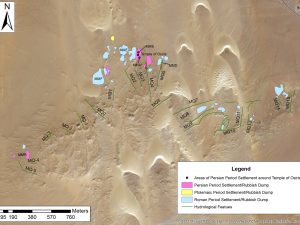
Fig. 1. Map showing the lines of qanats at Ain Manāwir (photo: J. Thibeau)
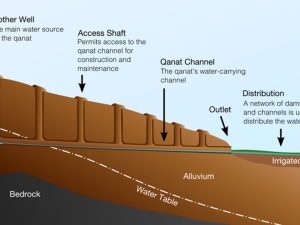
Fig. 2. Diagram of Qanat (photo: Samuel Bailey, Wikimedia Commons, public domain)
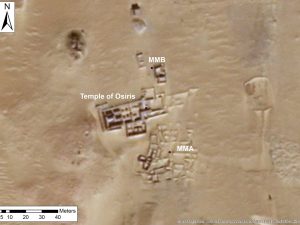
Fig. 3. Temple of Osiris and MMA and MMB (photo: J. Thibeau)
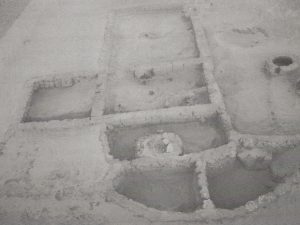
Fig. 4. Photo of House MMP (after Wuttman, “Les qanats de ‘Ayn-Manâwîr (oasis de Kharga, Égypte),” p.117)
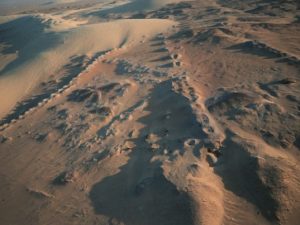
Fig. 5. Photo of MQ4 (after Wuttman, “Les qanats de ‘Ayn-Manâwîr (oasis de Kharga, Égypte),” p. 115)
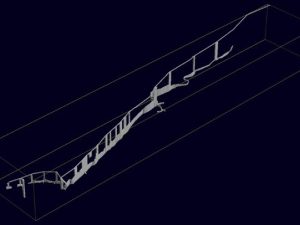
Fig. 6. MQ4 Qanat diagram (after Wuttman, “Les qanats de ‘Ayn-Manâwîr (oasis de Kharga, Égypte,” p. 115)
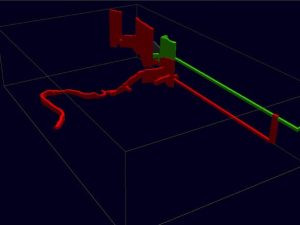
Fig. 7. Diagram of MQ13 (after Wuttman, “Les qanats de ‘Ayn-Manâwîr (oasis de Kharga, Égypte,” p. 131)
Archaeological Exploration
A team from l’Institut Français d’Archéologie Orientale (l’IFAO) began archaeological work at the site of Ain Manawir in 1994. In earlier seasons (1994-1996) the IFAO focused on the remains of the Persian Period, centered on the temple of Osiris. (fig. 8) The temple was 60 m in length along its axis and the walls were preserved to a height of between 3 and 0.2 m. (Wuttman et al., “Premier rapport préliminaire des travaux sur le site de ’Ayn Manawir (oasis de Kharga),” p. 393) Also excavated was a house connected to the temple that contained the temple bakery and archives as well as evidence of metal-working activity (fig. 9). (Wuttman et al., “Premier rapport préliminaire des travaux sur le site de ’Ayn Manawir (oasis de Kharga),” p. 403)
Beginning in 1997, the IFAO team took soundings across Ain Manawir to establish the site’s chronology. (Wuttman et al., “’Ayn Manawir (oasis de Kharga). Deuxième rapport préliminaire,” p. 367) Also significant was the survey and excavation of qanats at the site. The excavation of some of the 22 qanats documented at the site allowed for dating on the basis of ceramics. MQ4 was originally constructed in the middle of the 5th century B.C. and MQ13’s creation was also dated to the Persian Period, though both qanats were expanded upon and reused in the Roman period. (Wuttman et al., “’Ayn Manawir (oasis de Kharga). Deuxième rapport préliminaire,” p. 410; Wuttman, “Les qanats de ‘Ayn-Manâwîr (oasis de Kharga, Égypte),” p. 129, p. 133) Most of the qanats were merely surveyed, not excavated, so no other qanats at the site have yet been securely dated to the Persian Period. However, given the plentiful textual records related to qanat usage from Persian Ain Manawir, it is likely that other qanats at the site were in use in this period and further archaeological work could allow for dating more qanats at the site to the Persian Period.
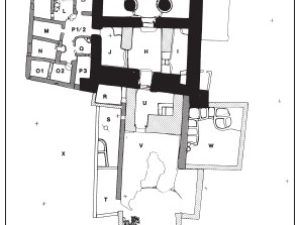
Fig. 8. Temple of Osiris Ain Manawir (after Wuttman et al.,“Premier rapport préliminaire des travaux sur le site de ’Ayn Manawir (oasis de Kharga),” p. 394)
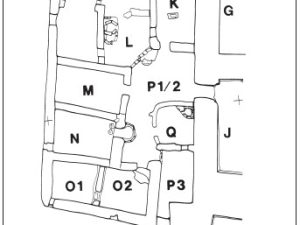
Fig. 9. House connected to Temple of Osiris (after Wuttman-et-al.,“Premier rapport préliminaire des travaux sur le site de ’Ayn Manawir (oasis de Kharga),” p. 406)
Finds
The excavation of the temple of Osiris and the connected house yielded the most significant finds from the site: four bronze statuettes of Osiris (fig. 10) and 460 Demotic ostraca dating to the reigns of Artaxerxes I (r. 465-424 B.C.), Darius II (r. 424-405 B.C.), Artaxerxes II (r. 405-359 B.C.) and the reigns of the following Egyptian 28th and 29th dynasty kings Amyrtaeus (r. 404-399 B.C.) and Nepherites I (r. 399-393 B.C.). (Wuttman et al., “Premier rapport préliminaire des travaux sur le site de ’Ayn Manawir (oasis de Kharga),” p. 393) The ostraca of the Persian period mainly fall under the reigns of Artaxerxes I and Darius II. (Wuttman et al., “Premier rapport préliminaire des travaux sur le site de ’Ayn Manawir (oasis de Kharga),” p. 410, p. 413-414) Nearly all of the ostraca are made of local red clay with mineral inclusions (fig. 11) (Wuttman et al., “Premier rapport préliminaire des travaux sur le site de ’Ayn Manawir (oasis de Kharga),” p. 415). This corpus of documents constitutes the surviving archive of the temple and provides important insight into daily life in a small oasis town on the outskirts of the Persian Empire. The contents of these documents include records of agricultural activity, contracts, and even private letters. (Wuttman et al., “Premier rapport préliminaire des travaux sur le site de ’Ayn Manawir (oasis de Kharga),” p. 404, p. 412) The most common type of document from the site is contracts dealing with the distribution of water from the qanats, indicating the central importance of this system to life at Ain Manawir. (Wuttman et al., “’Ayn Manawir (oasis de Kharga). Deuxième rapport préliminaire,” p. 442)
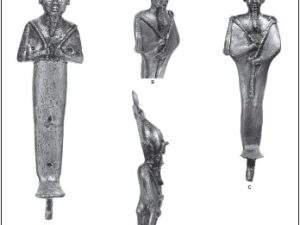
Fig. 10. Bronze Statuettes of Osiris (after Wuttman-et-al.,“Premier rapport préliminaire des travaux sur le site de ’Ayn Manawir (oasis de Kharga),” p. 432)
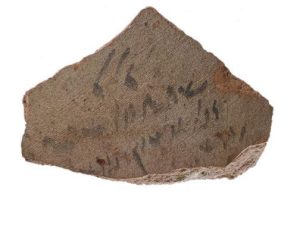
Fig. 11. Ostraca 3459 made from local red clay (photo: Achemenet, http://www.achemenet.com/en/tree/?/textual-sources/texts-by-languages-and-scripts/hieroglyphic-and-demotic-egyptian/ostraca-from-ain-manawir/2/24/1)
Bibliography
De Angeli, S., “Qanat Landscapes ": In the Oases of the Western Desert of Egypt,” Bahriya Oasis : Recent Research into the Past of an Egyptian Oasis, vol. 1, 2013, pp. 19-33.
Wuttman, M., Bousquet, B., Chauveau, M., Dils, P., Marchand S., Schweitzer, A., Volay, L., “Premier rapport préliminaire des travaux sur le site de ’Ayn Manawir (oasis de Kharga),” Bulletin de L’Institut Français d’Archéologie Orientale, vol. 96, 1996, pp. 385-451.
Wuttman, M., Barakat, H., Bousquet, B., Chauveau, M., Gonon, T., Marchand, S., Robin, M., Schweitzer, A., “’Ayn Manawir (oasis de Kharga). Deuxième rapport préliminaire,” Bulletin de L’Institut Français d’Archéologie Orientale, vol. 98, 1998, pp. 367-462.
Wuttman, M., Gonon, T., Thiers, C., “The Qanats of 'Ayn Manawir (Kharga Oasis, Egypt),” Proceedings. The First International Symposium on Qanat, Yazd, Iran May 8-11, vol. 4, Yazd Journal of Achaemenid Studies and Researches, 2000, pp. 162-169.
Wuttman, M., “Les qanats de ‘Ayn-Manâwîr (oasis de Kharga, Égypte),” Irrigation et drainage dans l’Antiquité, qanāts et canalisations souterraines en Iran, en Égypte et en Grèce : séminaire tenu au Collège de France, Briant, P. (ed.), Paris, 2001, p. 109-136.

































































































































